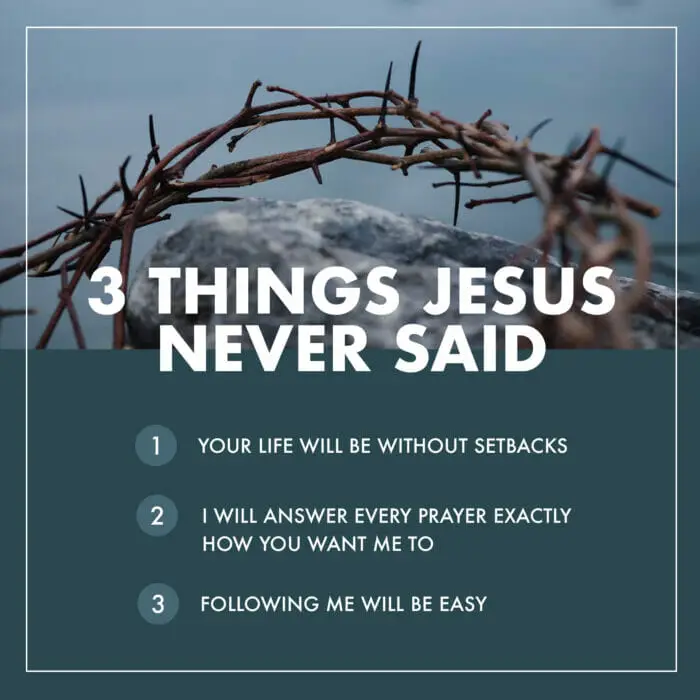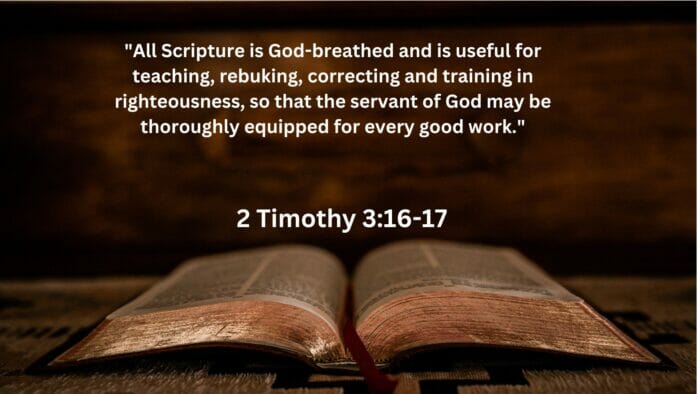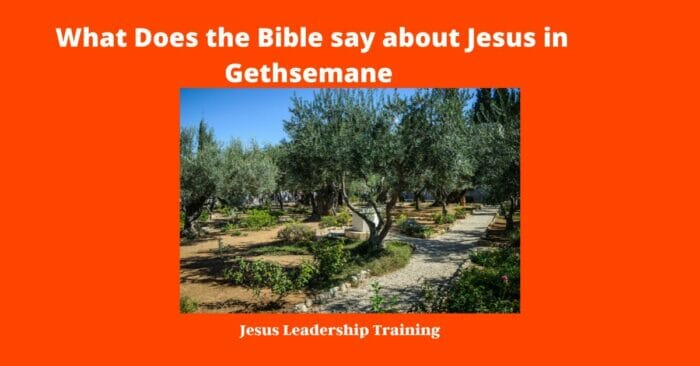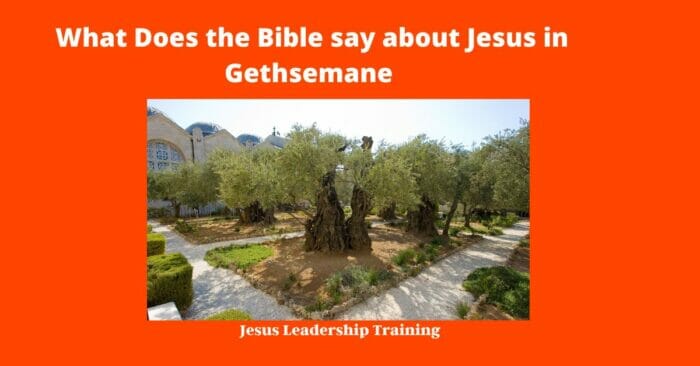What Does the Bible say about Jesus in Gethsemane – The Garden of Gethsemane is a significant location in the Bible, especially in regards to Jesus’ life and death. In Matthew 26:36-44, Jesus is described as going to the Garden of Gethsemane with his disciples, where he prayed to God for strength and guidance. Here, Jesus is described as being deeply troubled and overwhelmed by the prospect of his impending death. Despite his inner turmoil, Jesus still expressed his obedience and trust in God’s plan by saying, “Not my will, but yours be done.” In his moment of greatest suffering, the Bible paints Jesus as an example of strength and faith in the face of fear and death.
Table of Contents
What Does the Bible say about Jesus in Gethsemane?
Gethsemane is mentioned in the Bible in the context of Jesus’ suffering and death. It is the place where he prayed before his arrest and crucifixion. In the Bible, there is much to say about Jesus’ time in Gethsemane, including what happened and why it was so important. In this article, we will explore the Bible’s teachings about Jesus in Gethsemane and how this event can be meaningful to us today.

- The Garden of Gethsemane is a sacred site in Jerusalem, located at the foot of the Mount of Olives, where Jesus prayed the night before his crucifixion.
- According to the Bible, Jesus chose to go to the Garden of Gethsemane to pray in solitude.
- Jesus was accompanied by his disciples Peter, James and John, who fell asleep while Jesus was praying.
- While Jesus was praying, he asked his disciples to stay awake and watch with him, but they fell asleep due to their weariness.
- The Garden of Gethsemane is believed to be the same place where Judas Iscariot betrayed Jesus with a kiss.
- The garden is believed to be the site of an ancient olive grove, which still stands today.
- The Garden of Gethsemane is located on the east side of the Kidron Valley, between the Mount of Olives and the Temple Mount.
- The Garden of Gethsemane is a popular pilgrimage site for Christians, as it is a reminder of Jesus’ last moments before his death.
- The garden is thought to contain several ancient olive trees, which are believed to be over 2000 years old.
- The Garden of Gethsemane was declared a World Heritage Site in 2002, by the United Nations Educational, Scientific and Cultural Organization (UNESCO)

Where in the Bible is Gethsemane Located?
Gethsemane is located in the Garden of Gethsemane, which is just outside the city walls of Jerusalem. It is a place of great beauty and serenity, and it was a place of prayer for Jesus and his disciples. This garden was also the location of Jesus’ arrest and crucifixion.

When Did Jesus Pray in Gethsemane?
Jesus prayed in Gethsemane the night before his arrest and trial. He went there with his disciples and prayed for himself, his disciples, and all of mankind. It was during this time that Jesus experienced great anguish and sorrow. He was agonizing over the death that was about to come, and he prayed for strength and comfort.
Other Examples of Prayer
- The Lord’s Prayer – Jesus taught this prayer to his disciples as an example of how to pray (Matthew 6:9-13).
- Gethsemane Prayer – Jesus prayed to his Father for strength before his arrest (Matthew 26:36-44).
- Olivet Discourse – Jesus prayed for his disciples and for the coming of the Kingdom of God (Matthew 24:36).
- Baptismal Prayer – the Holy Spirit to descend upon him at his baptism (Luke 3:21-22).
- Blessing of the Children – Jesus prayed for the children gathered around him, blessing them with his hands (Matthew 19:14).
- Palm Sunday Prayer – Jesus prayed for the crowd that was gathered to celebrate his entry into Jerusalem (John 12:27-28).
- Garden of Gethsemane Prayer – Jesus prayed for strength before his arrest (Matthew 26:39).
- Parable of the Lost Sheep – Jesus prayed for the lost sheep to be found and rejoined to the flock (Luke 15:3-7).
- Intercession Prayer – Jesus prayed that his disciples would be kept safe from the evil one (John 17:11-20).
- High Priestly Prayer – Jesus prayed for the unity of all believers (John 17:20-26).

What Does the Bible Say About Jesus in the Garden of Gethsemane?
The Bible paints a vivid picture of Jesus in Gethsemane. It describes how Jesus was in great agony and distress, to the point of sweating drops of blood. It also says that he prayed fervently to the Father and asked for the cup of suffering to be taken away from him. However, Jesus was willing to accept the Father’s will if it was for the salvation of mankind.
Steps of Making Olive Oil in the Bible
- Harvesting: The first step in making olive oil in the Bible was harvesting the olives. This was typically done by hand, involving shaking the branches of the olive tree and gathering the olives that fell to the ground.
- Threshing: The olives were then placed in a threshing floor and beaten with a stick or a flail to separate the oil-rich fruit from the other parts.
- Crushing: The olives were then crushed in a stone or wooden mortar and pestle to extract the oil.
- Straining: The crushed olives were then placed in a sieve or fine cloth and pressed to separate the oil from the pulp and skin.
- Pouring: The strained oil was poured into clay jars or stone vessels and stored for later use.
- Burning: Olive oil was also used for anointing and burning in religious ceremonies. It was poured over a sacrificial animal or a sacred object and then set alight.
- Lighting: Olive oil was also used to light lamps and provide illumination in the dark.
- Cooking: Olive oil was used for cooking and baking. It is still a popular ingredient in Mediterranean cuisine.

What Does the Hebrew Word Gethsemane Mean?
The Hebrew word “Gethsemane” means “oil press.” This symbolizes the pressing of oil from olives, which was a common practice in the area. It is also an appropriate metaphor for Jesus’ suffering, in which he was being pressed by the weight of his destiny.
What Are the Bible Verses About Jesus in Gethsemane?
The Bible contains several verses about Jesus in Gethsemane. These include Matthew 26:36-46, Mark 14:32-42, and Luke 22:39-46. In these verses, Jesus is described as being in great distress and anguish, praying for strength and courage to accept the Father’s will. He also asks for the cup of suffering to be taken away from him.
What Was Jesus Praying For in Gethsemane?
In Gethsemane, Jesus was praying for strength and courage to accept the Father’s will. He was also asking for the cup of suffering to be taken away from him, but he was willing to accept it if it was God’s will. He was praying for all of mankind, that they would be saved and restored to God’s presence.

How Does the Bible Describe the Cup Jesus Had to Drink in Gethsemane?
The Bible describes the cup Jesus had to drink in Gethsemane as being full of the wrath of God against sin. It was a cup full of suffering and death, and Jesus was willing to accept it if it was for the salvation of mankind. Jesus knew that this cup would be the only way for mankind to be saved and restored to God’s presence.
- Jesus was Fulfilling Prophecy: Jesus willingly gave his life to fulfill prophecy. In the Old Testament, Isaiah foretold of a coming Messiah who would suffer and die for the sins of the world (Isaiah 53:5-6). Jesus knew that his death was essential to the fulfillment of scripture, and he willingly laid down his life to fulfill God’s plan.
- Jesus was Showing Obedience to God: Jesus was obedient to God’s will and chose to die on the cross to save humanity from their sins. Jesus knew that his death was the only way to redeem humanity, and he willingly accepted his fate. He said, “No one takes [my life] from me, but I lay it down of my own accord” (John 10:18).
- Jesus was Making Atonement for Our Sins: Jesus willingly accepted the weight of humanity’s sins and chose to die so that we could be free from sin and gain access to eternal life. He said, “For God so loved the world, that he gave his only Son, that whoever believes in him should not perish but have eternal life” (John 3:16).
- Jesus was Showing Compassion and Love: Jesus was willing to suffer and die for our sins out of love and compassion. He said, “Greater love has no one than this, that someone lay down his life for his friends” (John 15:13).
- Jesus was Demonstrating His Sovereignty: Jesus’ death demonstrated his control over life and death. He said, “I am the resurrection and the life. Whoever believes in me, though he die, yet shall he live” (John 11:25). By willingly laying down his life, Jesus showed that nothing can separate us from his love and power.
- Jesus was Establishing a New Covenant: Jesus’ death established a new covenant between God and humanity. Through his death and resurrection, Jesus made the way for us to have a right relationship with God. He said, “This cup is the new covenant in my blood, which is poured out for you” (Luke 22:20).
What Does the Bible Say About Jesus’ Relationship With His Father in Gethsemane?
The Bible says that in Gethsemane, Jesus had a deep and intimate relationship with his Father. Even in his anguish and distress, Jesus was still obedient to the Father’s will. He prayed for strength and courage to accept the cup of suffering, trusting that it would be for the salvation of mankind.
What Does the Bible Say About Jesus’ Prayers in Gethsemane?
The Bible says that Jesus prayed for the strength to accept the cup of suffering, for the salvation of mankind, and for his disciples. Jesus was in great distress and anguish, but he kept trusting in the Father and praying for courage and strength. His prayers in Gethsemane demonstrate his faith and obedience to the Father.
Where Can Our Garden of Gethsemane Be
- Home: Home is a place of private prayer for many people. Whether it’s in a bedroom, a corner of a living room, or a quiet spot in the backyard, people create a sacred space in their homes to pray and reflect in.
- Church: Churches are the traditional places of worship for many faiths and denominations. People can find a private space in their church to pray and meditate.
- Mosque: Mosques are the traditional places of worship for Muslims. People can find a private space in the mosque to pray and meditate.
- Synagogue: Synagogues are the traditional places of worship for Jews. People can find a private space in the synagogue to pray and meditate.
- Temple: Temples are the traditional places of worship for Hindus. People can find a private space in the temple to pray and meditate.
- Outdoor Spaces: People can find outdoor spaces such as parks and forests to be places of private prayer. These places provide a sense of peace and can be used to reflect and connect with nature.
- Beach: Beachfronts provide a beautiful atmosphere to pray and meditate. People can find a secluded spot on the beach and connect with the power of the ocean.
- Retreat Centers: Retreat centers are places set aside for people to take a break from the hustle and bustle of everyday life. People can find a private space in these centers to pray and meditate.
- Monasteries: Monasteries are places of worship and meditation for many faiths. People can find a private space in the monastery to pray and meditate.
- Meditation Rooms: Many workplaces, schools, and other public places now have meditation rooms set aside for people to take a break and find peace. These places can also be used for private prayer and reflection.
What Does the Bible Say About Jesus’ Temptation in Gethsemane?
The Bible says that in Gethsemane, Jesus was tempted to turn away from the Father’s will. He was tempted to take a different path, one that did not involve suffering and death. However, Jesus was determined to accept the cup of suffering, trusting that it was for the salvation of mankind.
How Does the Bible Describe the Olive Garden of Gethsemane?
The Bible describes the Garden of Gethsemane as being filled with olive trees, which symbolize peace and hope. It was a peaceful place, and it was here that Jesus prayed for strength and courage to accept the cup of suffering. The olive trees also symbolize God’s presence and his grace, which were with Jesus in Gethsemane.
Final Thoughts – What Does the Bible say about Gethsemane
Gethsemane is a place of great significance in the Bible. It is the place where Jesus prayed before his arrest and crucifixion. In the Bible, there is much to say about Jesus’ time in Gethsemane, including what happened and why it was so important. In this article, we explored the Bible’s teachings about Jesus in Gethsemane and how this event can be meaningful to us today.
We looked at the location of Gethsemane, when Jesus prayed there, and what the Bible says about Jesus in the garden. We also looked at the meaning of the Hebrew word Gethsemane, the Bible verses about Jesus in Gethsemane, what Jesus was praying for, how the Bible describes the cup Jesus had to drink in Gethsemane, and Jesus’ relationship with his Father in Gethsemane. Finally, we explored Jesus’ temptation in Gethsemane and how the Bible describes the olive garden. Through all of these Biblical accounts, we can gain insight into Jesus’ love and obedience to the Father and his willingness to accept the cup of suffering for the salvation of mankind.
Greg – Darlene and I got To Visit it in November of 2014



